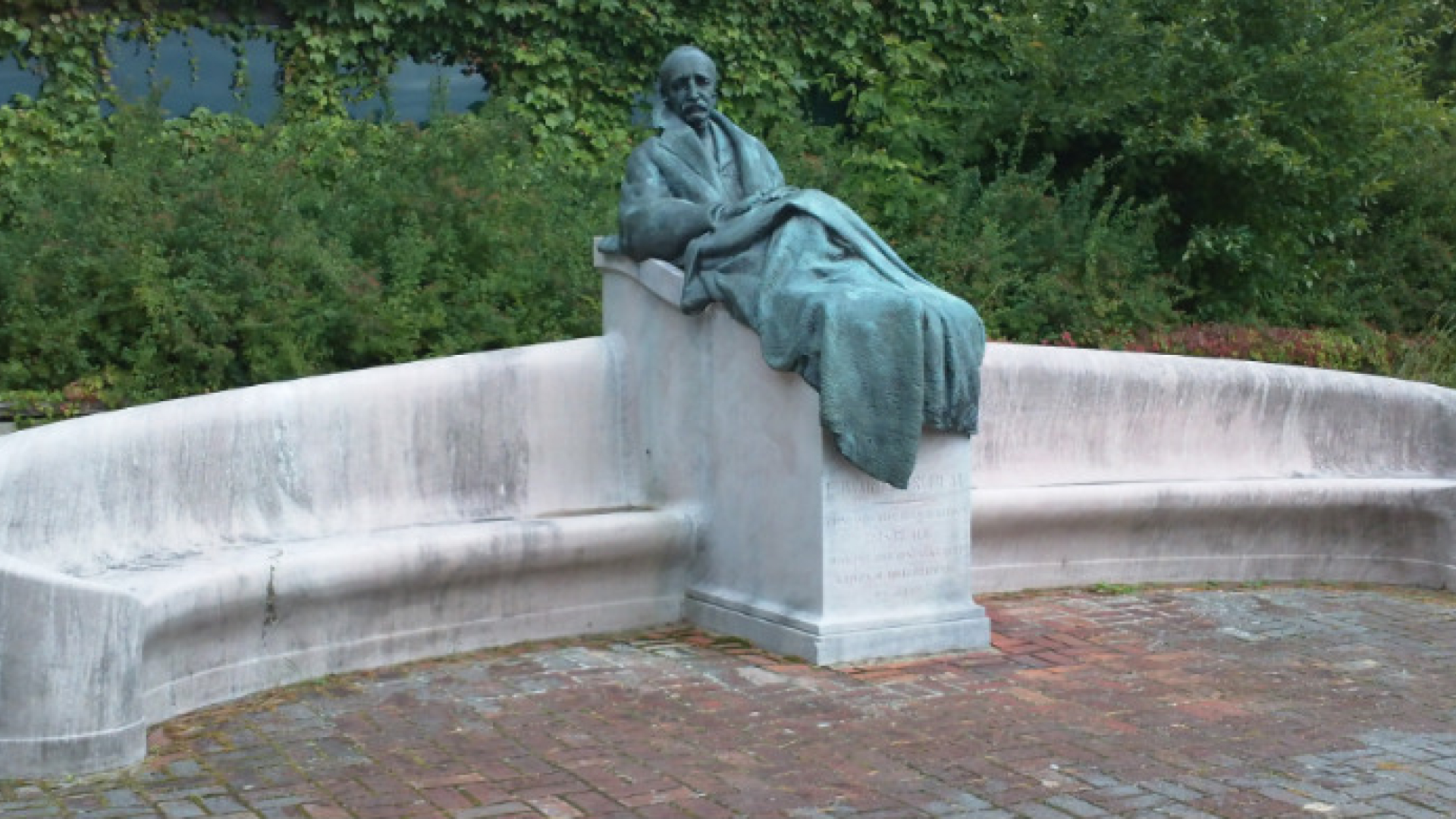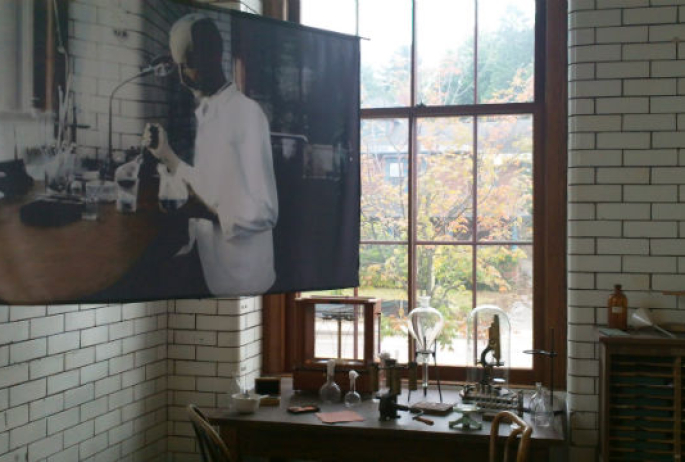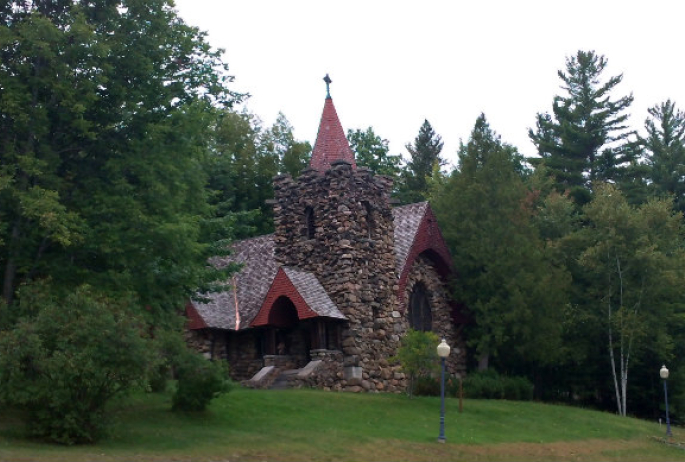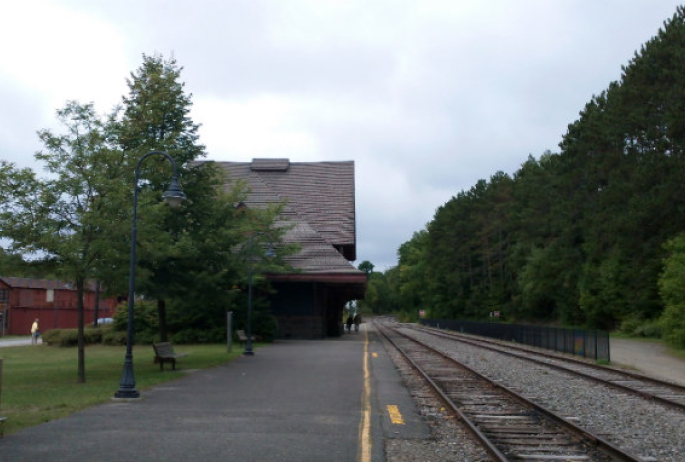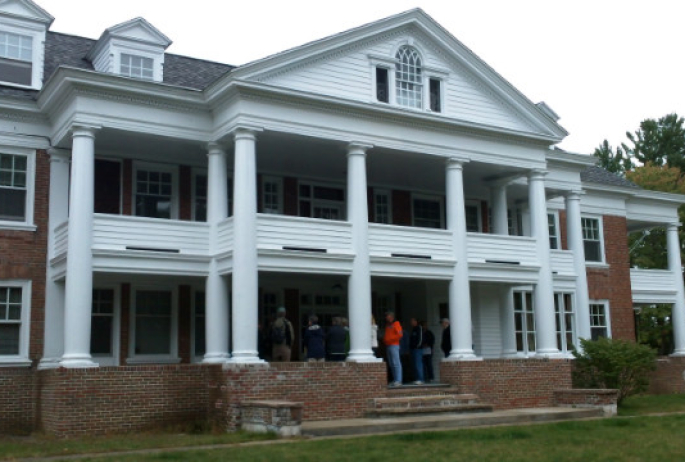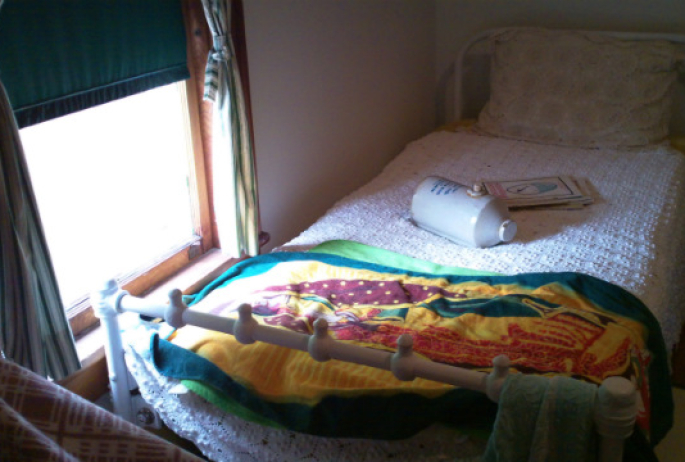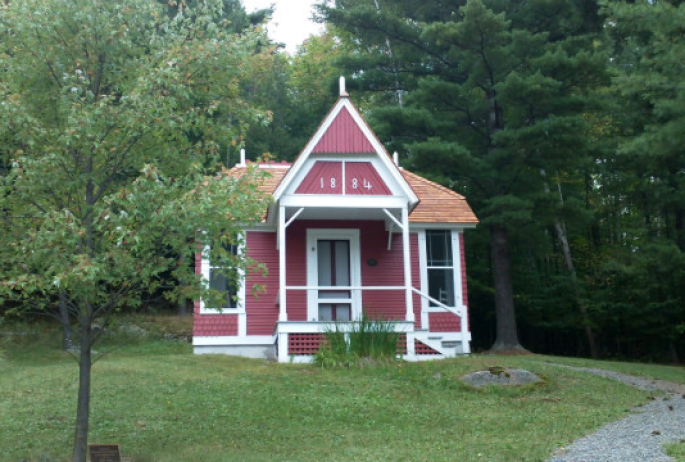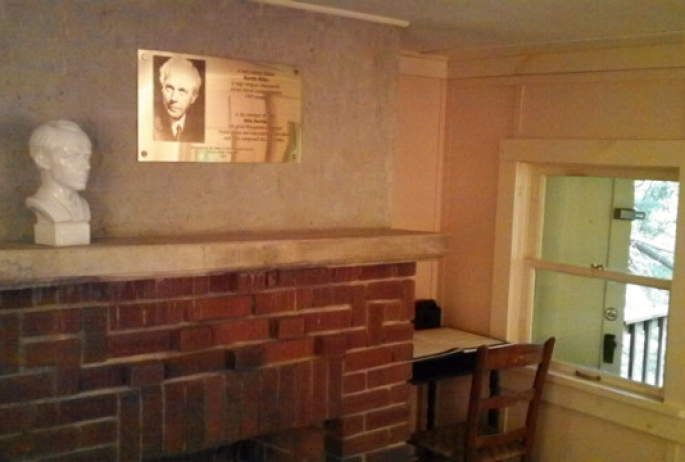Saranac Lake spent the decades between 1884 and 1954 as a world-famous curing center. Our history of wellness endeavors continues to this day. It all started with Dr. Edward Livingston Trudeau (statue, above) in 1873. He came to Saranac Lake expecting only to spend his last days in his beloved wilderness. He had tuberculosis, and in those days, it was a death sentence.
Except he got better.
This turn of events was so unexpected, and the potential so promising, that Dr. Trudeau devoted the rest of his life to tuberculosis research and patient care. He was one of the leaders of the Sanatorium Treatment, as it came to be known. This was a cure based on rest, good food, and gentle exercise, all taking place in the fresh air and natural peace of the outdoors.
Cure Tour
Once a year, Historic Saranac Lake joins forces with Adirondack Architectural Heritage (AARCH) to conduct the Ultimate Cure Tour, where all the most popular locations of Saranac Lake's curing heritage can be visited in one day.
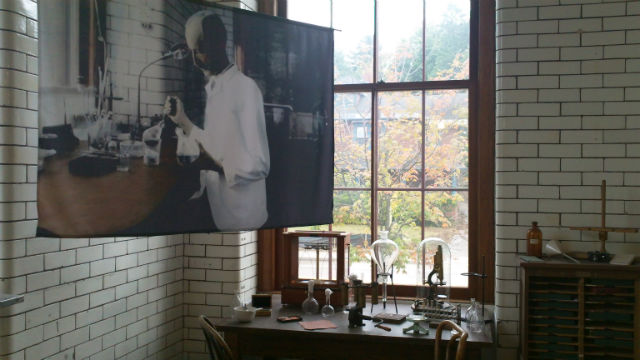
The Lab
We start at the Trudeau Laboratory, built in 1894 as a state-of-the-art facility, the first exclusive tuberculosis research laboratory in the United States. Since the previous lab had been a room in Dr. Trudeau's house, which burned down in a heater accident, it was important to Dr. Trudeau and his benefactor, Dr. George C. Cooper, that the new lab be "a good stone and steel laboratory, one that will never burn up." It was refurbished, and opened as a museum, in 2009.
We begin by watching a short film produced by Historic Saranac Lake, "This Was Heaven Really." It uses historic photographs and the words of patients who cured here, and is narrated by a former patient who came here to cure, met and married a fellow patient, and lived here until her nineties, when her TB returned.
Her experience illustrated the arc of many of the patients who cured in Saranac Lake. The disease was both common and misunderstood. So people who weren't even sure what they were sick with were shunned by the fearful. Saranac Lake became a unique place where, thanks to dedicated study by the doctors who ran the public health services, patients were able to mingle with townspeople without fear of infection.
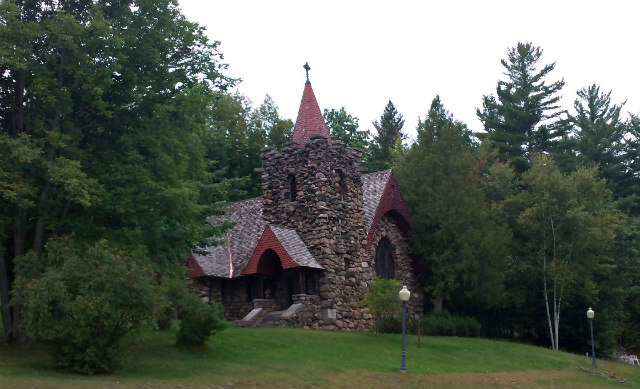
The Sanitarium
After we toured the lab, our next stop was the actual "San," Adirondack Cottage Sanitarium, where the beautiful grounds are dotted with multiple cottages. Not only did Dr. Trudeau advocate for such small and homey housing as part of a supportive curing atmosphere, he had discovered that people were more likely to donate a single building, with their name on it, than they were to donate more anonymously towards a giant building.
We saw the Doctor's Cottage, where the bachelor doctors lived, and was distinguished by rounded porches at each end. Each cottage was designed to have different architectural touches, with easy access to the life-giving sun and air. The Workshop was where patients created items for the Sanitarium, learned new trades if their old ones had gotten them sick, and dressed in their best to flirt with fellow patients.
TB could strike the young and seemingly healthy; in fact, half of the patients curing were teens or adults under thirty. Isolated from their families, and often estranged from former love interests, any patient looking forward to their new life seemed also interested in not embarking upon it alone.
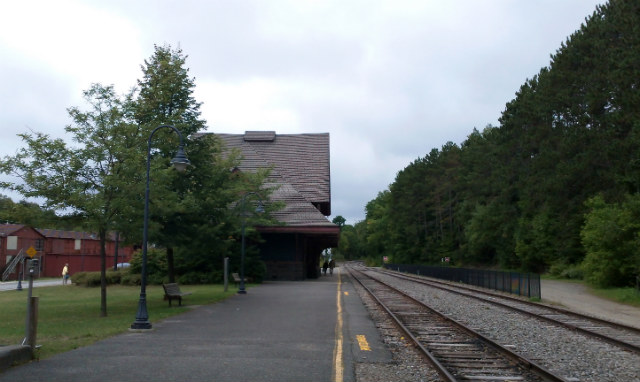
Lunchtime and the Railroad
We had lunch at the Adirondack Carousel and visited the railroad depot, an important stop for Saranac Lake's flow of patients. As the railway expanded all the way down to New York City, it became easier physically, and more accessible financially, for people to reach the remote Adirondacks. By the turn of the 20th century, it was the primary way to travel.
When patients arrived at the Union Depot, they were first taken to the Riverside Inn, now occupied by the bandshell in Riverside Park. Here they were examined to determine the extent of their disease. After a couple of days of evaluation, they would consult the TB Book, which listed all the places that might match their level of illness, required care, and financial resources.
Remodel
Patients began streaming in from the 1890's onward, as diagnosis became more accurate, and the benefits of the wilderness cure more evident. The people of Saranac Lake began remodeling their homes to offer more porches and bedrooms to potential patients. The radio station went silent during the afternoon rest time.
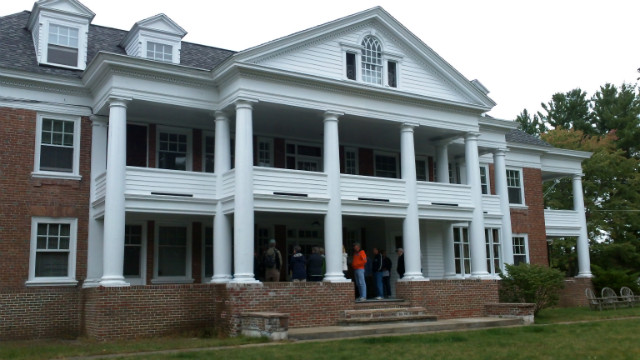
Prescott House, then known as the Reception Hospital, opened in 1905 to take over some of the sorting duties for those who were the most ill. It was the gift of Mary Prescott, a young heiress from Massachusetts, who had cured with Dr. Trudeau in 1895, and continued her interest in the area even after she became well.
The building was extremely modern for its time, with extensive porches, private rooms and suites instead of large wards, and a water-operated elevator. Dr. Trudeau emphasized the importance of a quiet, home-like atmosphere for patients. While some large sanitoria were built with state funds, most of the people curing did so in small buildings, or in people's homes.
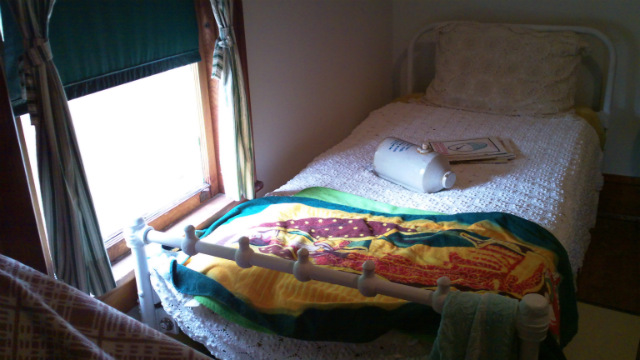
The next stop of the tour is at a private home which was once a curing cottage. Though the rest of the house is a private residence, part of the home has become a museum which has recreated the curing experience.
For more about life while curing in a private home, see our blog post, A cure cottage tour, a step back in time.
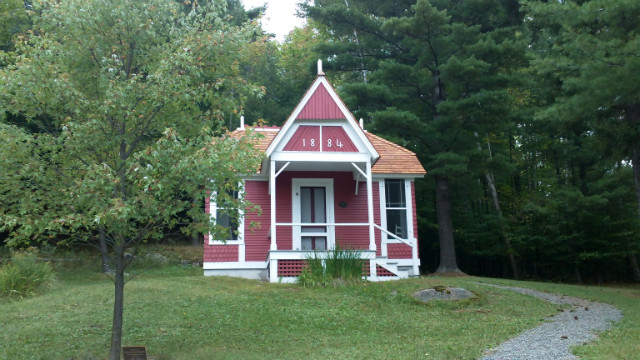
Story of Little Red
Dr. Trudeau's cottage philosophy is seen very clearly in the iconic 1884 structure nicknamed Little Red. This was the very first cure cottage built at the Sanitarium; a two person cottage containing two beds, two dressers, a wood-burning stove, and little else. While only fourteen by eighteen feet, with a porch so small only one person could occupy it at a time, it offered better ventilation and sanitation than alternative structures.
It was the gift of Mrs. William Jenks, of Philadelphia, and was also known as "Jenks." Its first patients were sisters, factory workers Mary and Alice Hunt, who recovered. Little Red's self-contained nature let it be moved around the grounds many times as buildings expanded and needs shifted. in 1964 the sale of the Sanitarium grounds to a private enterprise led to Little Red being moved to the Trudeau Institute, where it still stands.
This is also the site of the commemorative Trudeau statue, which was commissioned by grateful patients as a tribute to their own "Beloved Physician." At this appropriate spot we enjoyed an informative lecture on the woman who wrote "The Healing Woods," Martha Reben.
In a series of three memoirs, first published in 1952, Ms. Reben described how years of attempts at curing in other places led her to Saranac Lake, where a further three years, and three operations, had still not cured her. In 1930 she decided it was a case of not taking Dr. Trudeau's curing approach far enough, and found an ad that local Guide Fred Rice had placed which offered to take someone into the woods to experience all the wilderness could offer.
Her experiences there gave her a new lease on life, and she became a beloved figure in Saranac Lake until she died in 1964.
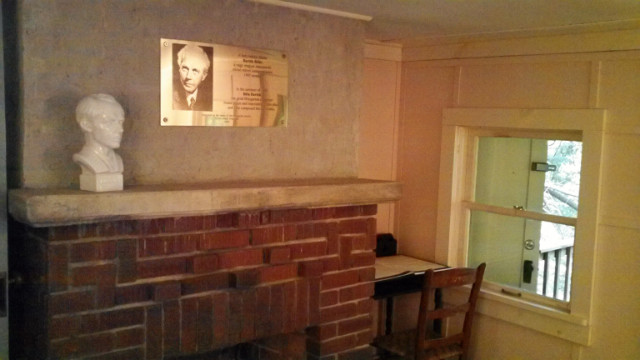
The Finale
The final stop on the tour is a rare treat; the Bartók Cabin. This simple structure was built sometime in the 1920's or 30's as a summer rental, and is nestled so closely into the steep hillside it's difficult to see even when one is almost stepping onto the porch. Because of the location and its fragile condition, tours are conducted at rare intervals.
The great Hungarian composer Béla Bartók was a penniless refugee fleeing the Nazis when he arrived in the US in 1940. When he became ill, it was thought to be a recurrence of the tuberculosis he had as a young man, and the American Society of Composers, Authors and Publishers sent him to Saranac Lake to experience the best care available. When his illness was eventually diagnosed as leukemia, there was no treatment, and Bartók was so happy in Saranac Lake that his sponsors gladly let him stay there. He rallied enough to compose two further works, his Third Piano Concerto and his Viola Concerto.
The Ultimate Cure Tour costs $50 and includes a hardback copy of the coffee table book, "Cure Cottages of Saranac Lake, Architecture and History of a Pioneer Health Resort," by Phillip L. Gallos. It is a Historic Saranac Lake publication.
Find the next tour in our calendar of events. Explore our historic downtown. Stay in your very own Adirondack cottage. Find your own path to wellness.
